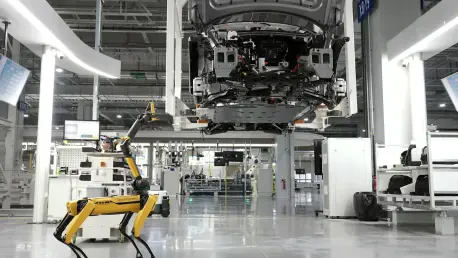I’m thrilled to sit down with Simon Glairy, a renowned expert in insurance and Insurtech, with a deep specialization in risk management and AI-driven risk assessment. With years of experience shaping the future of underwriting through innovative technology, Simon offers unparalleled insights into how AI is revolutionizing the industry. In this conversation, we dive into the transformative power of AI platforms in underwriting, the challenges of scaling operations for managing general agents (MGAs), and the practical impacts of modernizing workflows to achieve efficiency and growth. Join us as we explore how cutting-edge solutions are redefining risk evaluation and setting new benchmarks for performance in the insurance sector.
Can you share the vision behind organizations like Beyond Risk and what drives their focus on building top-tier MGAs?
Absolutely. The vision for organizations like Beyond Risk is rooted in creating MGAs that stand out as market leaders in both growth and performance. The inspiration often comes from recognizing gaps in the industry—where traditional processes slow down innovation or limit scalability. Their mission is to empower affiliated companies to push boundaries by leveraging advanced tools and strategies, ensuring they can handle larger volumes of business while maintaining high standards of underwriting excellence. It’s about setting a new bar for what’s possible in the insurance space.
How do forward-thinking groups define underwriting excellence for their affiliates?
Underwriting excellence, in this context, means achieving a balance of speed, accuracy, and profitability. It’s about moving away from outdated, manual processes and fragmented systems to create streamlined, data-driven workflows. For affiliates, this translates to being able to evaluate risks with precision, respond to brokers quickly, and make decisions that consistently drive positive outcomes. It’s also about scalability—ensuring that as business grows, the quality of underwriting doesn’t falter.
What are some common hurdles in underwriting operations that companies face before adopting AI solutions?
Before embracing AI, many companies struggle with manual processes that are incredibly time-consuming. Underwriters often spend hours on repetitive tasks like data entry or submission intake, which slows down the entire operation. Fragmented systems are another big issue—disconnected tools make it hard to get a clear picture of risk. These challenges can stifle growth, especially when submission volumes spike, leaving teams overwhelmed and unable to keep up with demand or maintain consistent decision-making.
What draws organizations to AI platforms for underwriting, and what specific benefits do they seek?
The appeal of AI platforms lies in their ability to solve those pain points I just mentioned. Organizations are drawn to features like automated submission intake, intelligent risk triaging, and embedded rating capabilities. These tools take the grunt work out of underwriting, freeing up teams to focus on strategy and complex decisions. Beyond that, scalability and efficiency are huge draws—AI offers a way to handle growing workloads without needing to expand headcount, while also ensuring faster responses and more accurate risk assessments.
Can you walk us through how AI platforms are changing the day-to-day workflows for underwriters?
Certainly. AI platforms are transforming workflows by automating tedious, manual tasks. For example, instead of manually reviewing every submission, underwriters can rely on AI to sort and prioritize risks based on predefined criteria. This means they’re only focusing on the cases that truly need their expertise. The technology also speeds up processing times—submissions that used to take hours can now be handled in minutes, allowing quicker responses to brokers and a more seamless experience overall.
In what ways does AI enhance decision-making for underwriters on the ground?
AI acts like a superpower for underwriters by surfacing critical risk insights in real time. It analyzes vast amounts of data to highlight red flags or opportunities that might be missed in a manual review. This not only speeds up the decision-making process but also improves consistency—underwriters across a team are working from the same data-driven foundation. Over time, this leads to more accurate and profitable decisions, as the platform helps align evaluations with the company’s broader risk appetite and goals.
How does the concept of ‘intelligence and agility’ play out in helping organizations grow in a competitive market?
Intelligence and agility are game-changers for growth. Intelligence comes from AI’s ability to provide deep, actionable insights into risks, enabling smarter underwriting strategies. Agility, on the other hand, is about speed and adaptability—being able to pivot quickly as market conditions change or submission volumes grow. In practical terms, this means an organization can take on more business, enter new markets, or respond to broker needs faster than competitors, all while maintaining control over risk and profitability.
What were some of the biggest bottlenecks in traditional underwriting processes, and how does AI help eliminate them?
Traditional underwriting is often bogged down by bottlenecks like manual data entry, inconsistent risk evaluation methods, and slow turnaround times. For instance, underwriters might spend hours gathering information from multiple sources just to assess a single submission. AI eliminates these by automating data collection and analysis, standardizing risk triaging, and cutting down processing times dramatically. This not only clears the backlog but also creates a smoother, more efficient workflow that can scale with demand.
Looking ahead, what is your forecast for the role of AI in shaping the future of underwriting and risk management?
I believe AI will become the backbone of underwriting and risk management in the coming years. We’re already seeing it redefine efficiency and precision, but the future holds even more potential. I expect AI to evolve into more predictive tools, helping insurers anticipate risks before they materialize. It will also likely integrate deeper with other technologies, like IoT or blockchain, to create a more connected and transparent insurance ecosystem. Ultimately, AI will enable the industry to move from reactive to proactive risk management, unlocking growth opportunities we can’t even fully imagine yet.









